This post covers the first 2 days of the trip (March 14-15) when we flew from Kobe, Japan to the Okinawa prefectural capital of Naha.
The shopping street aimed strictly at tourists in Naha, Kokusai-dori (国際通り). The most interesting thing is that almost everything in Okinawa, unlike on mainland Japan, was aimed at tourists. More precisely, Japanese domestic tourists, for whom, Okinawa feels like visiting a foreign country, yet everyone knows how to speak standard Japanese.
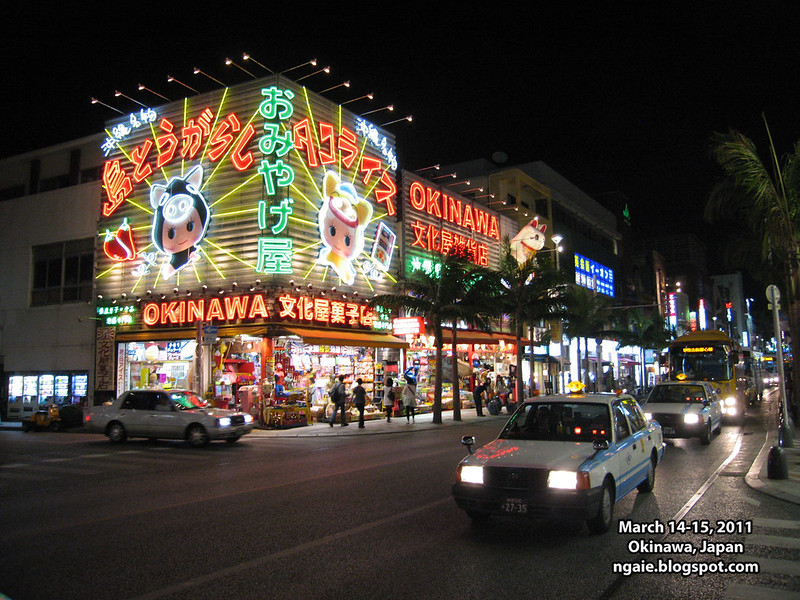
The location of Okinawa in relation to the rest of Japan. It seems that Okinawa is closer to Taiwan than to Tokyo.
View Okinawa in a larger map
In the days before low cost carrier airlines were launched in Japan, flying to Okinawa was really expensive. So in order to get the cheapest flight, we had to fly from Kobe, Japan via Skymark Airlines, an airline that was "cheap" compared to the regular airlines like Japan Airlines or All Nippon Airways, but not as cheap as today's low cost carriers in Japan, like Jetstar Japan, Peach Aviation or AirAsia Japan.
Like most newly built airports in Japan, Kobe's airport was located on a reclaimed island in the harbour. The Port of Kobe is in the background.
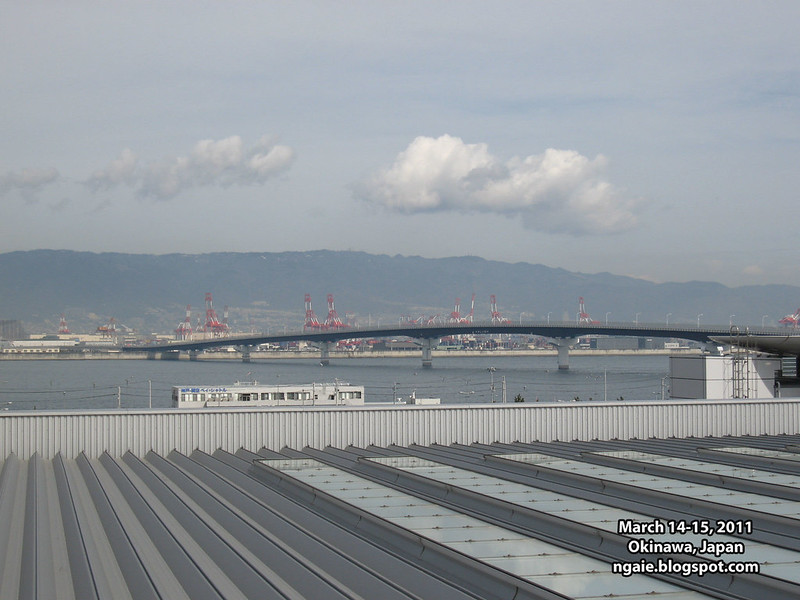
One of the good things about Japan is that every airport had viewing platforms without windows where you could see the airplanes. Truly an aviation enthusiast's wonderland.
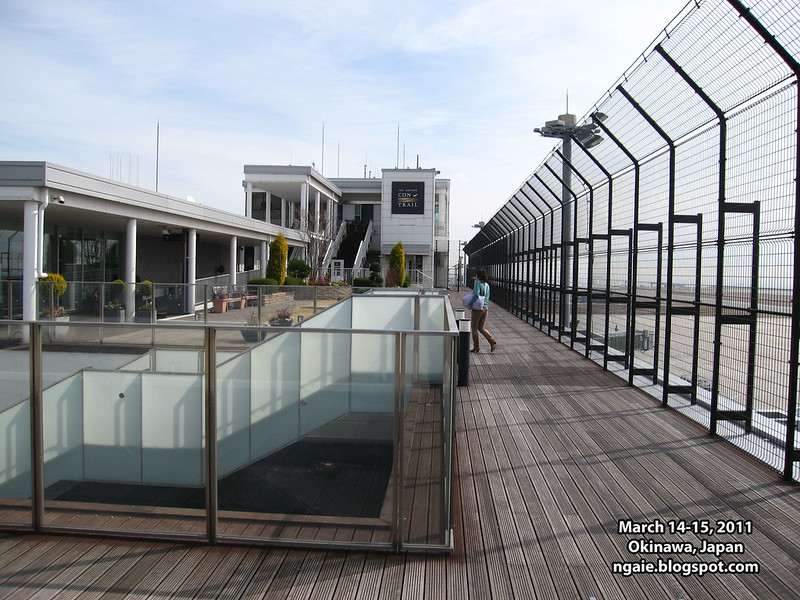
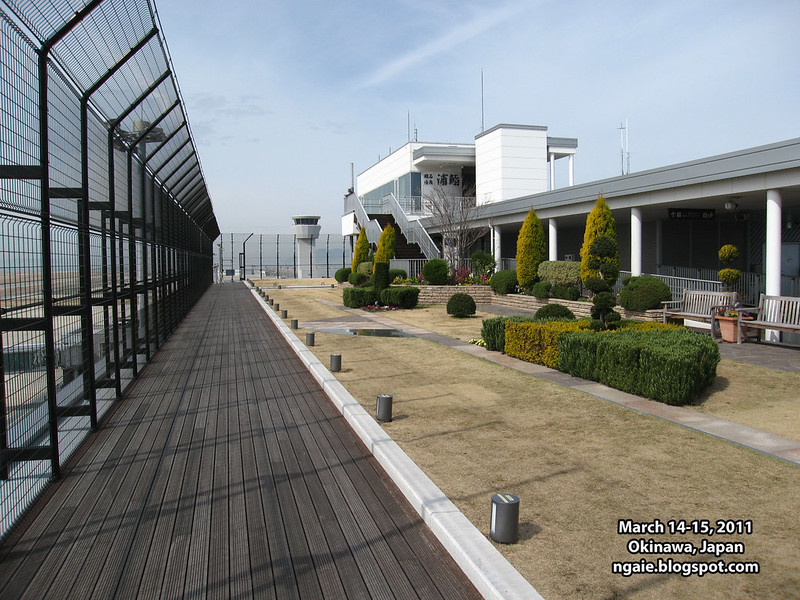

The boarding pass for the flights. The one way fare was about 17,800 yen ($180 USD).
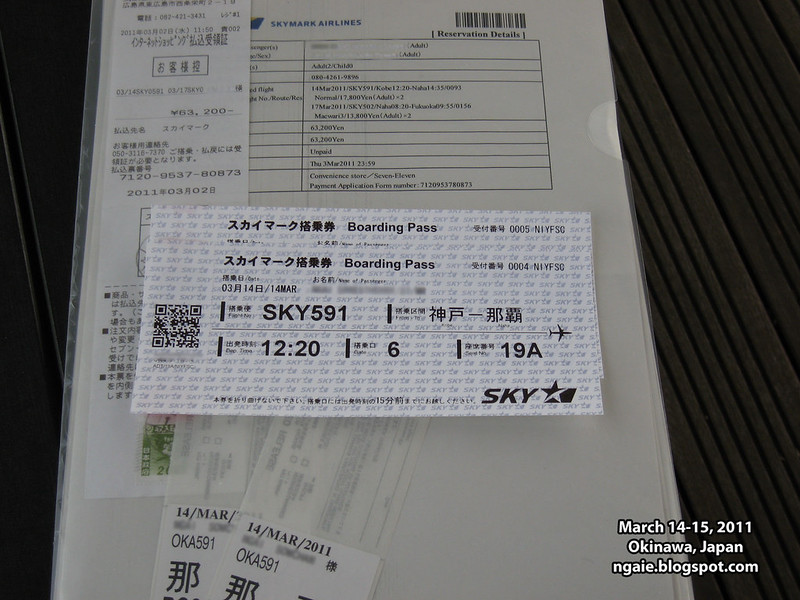
Lift off from Kobe.
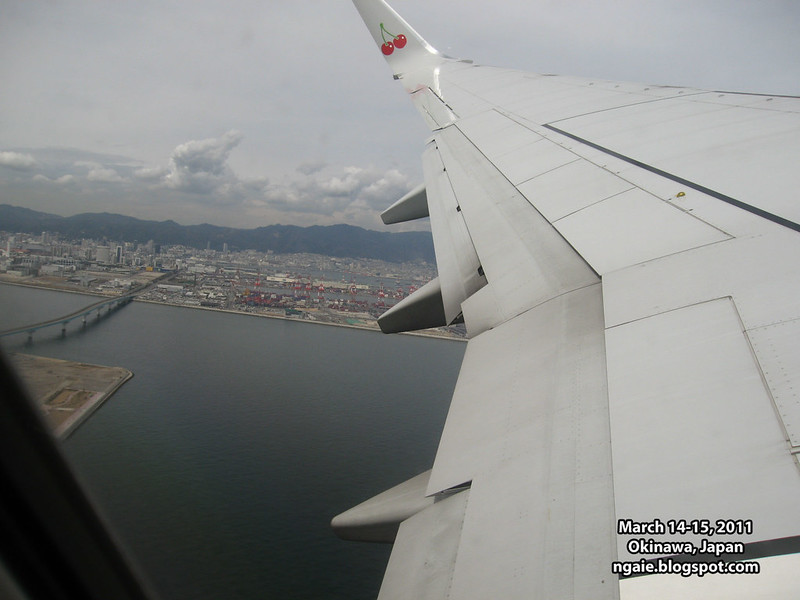
Arrival at Naha airport. One of the things that was most notable upon arrival, was the tropical environment of Okinawa compared to mainland Japan. (i.e., very green, a lot of palm trees, etc.)
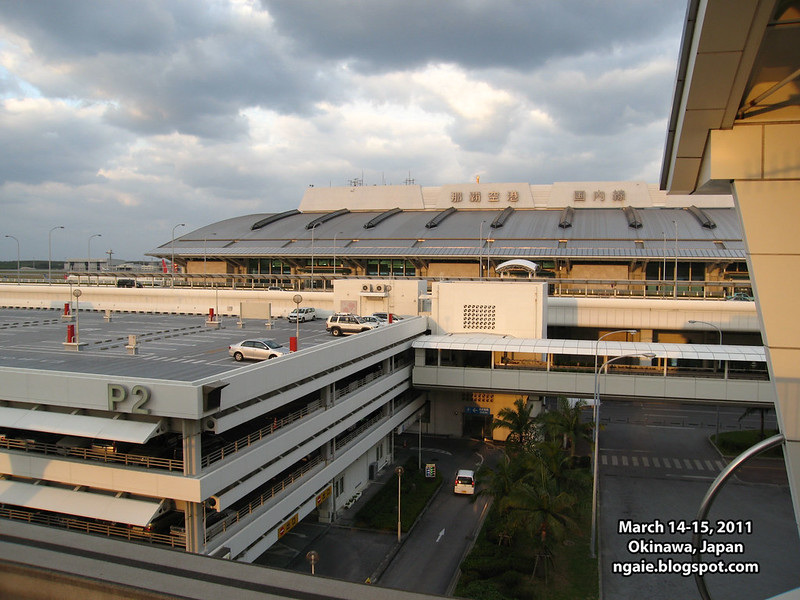
Taking the monorail from the airport to our hotel in the central area of Naha. Unlike "standard American thinking", monorails *can* be used for "regular public transport". It is not a transport mode exclusive to theme parks.
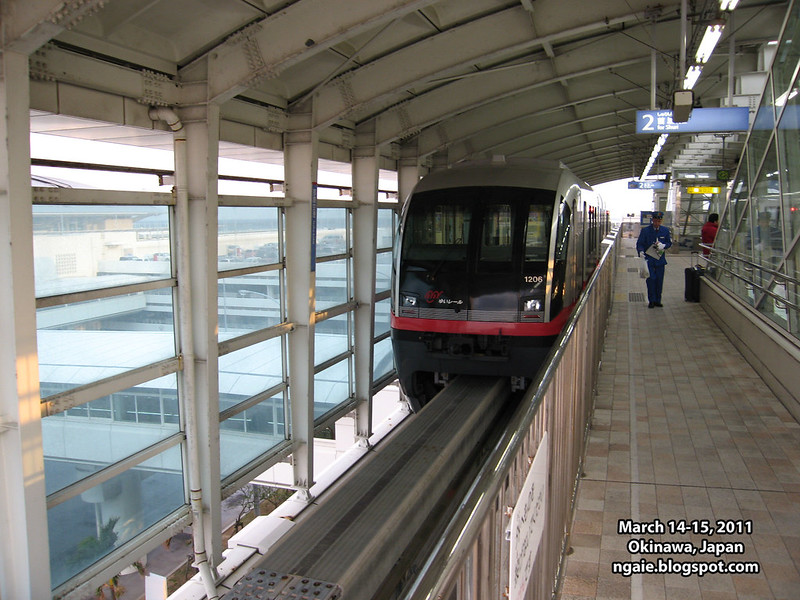
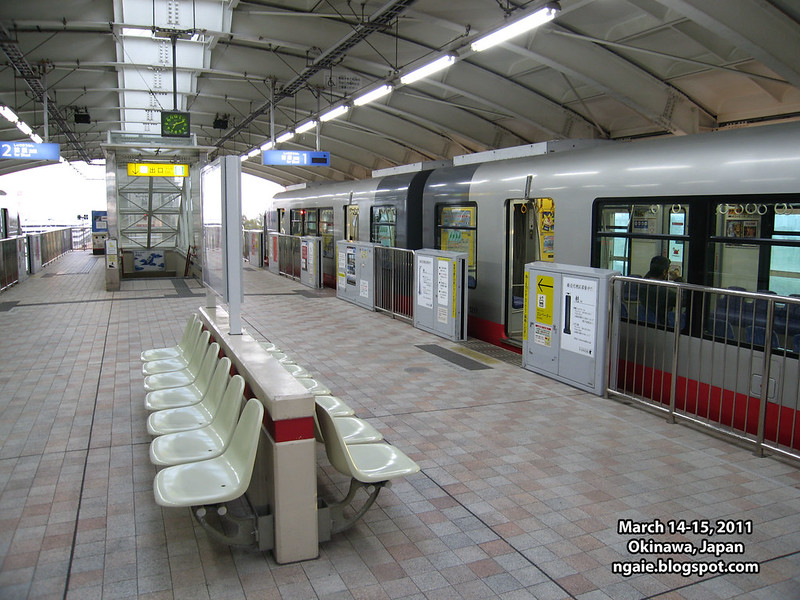
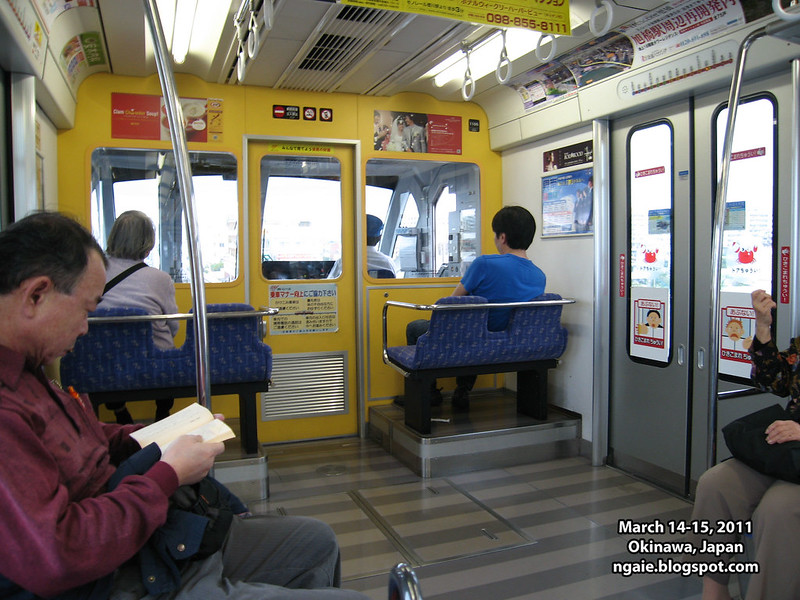
Riding the monorail and looking out into the Okinawan landscape, I was surprised to see so much open space in an urban area.

A monorail switch.

Arrival in the central area of Naha. Similar to mainland Japan, there are tons of concrete and ugly buildings everywhere, but however, things in Okinawa seem "less orderly" and more "dirty" than on mainland Japan. In some respects, Okinawa, looks like a developing Asian country, except that everyone speaks Japanese.
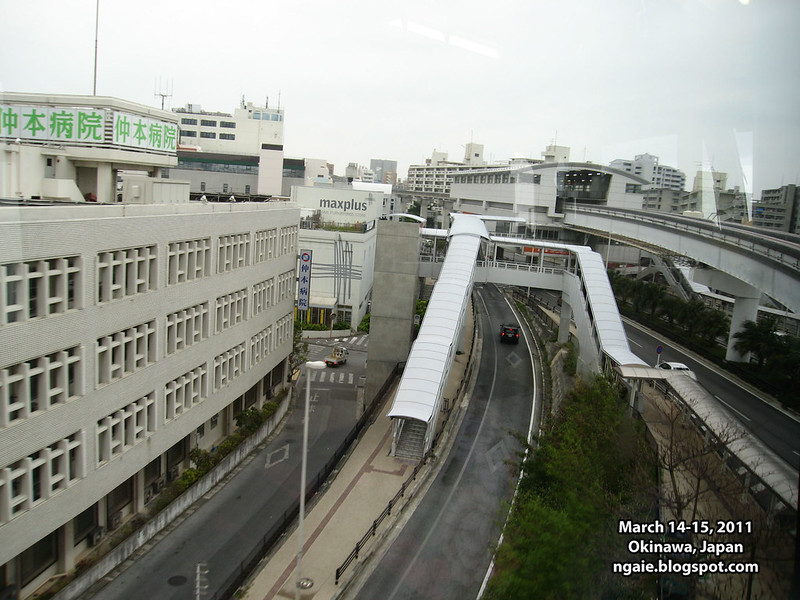
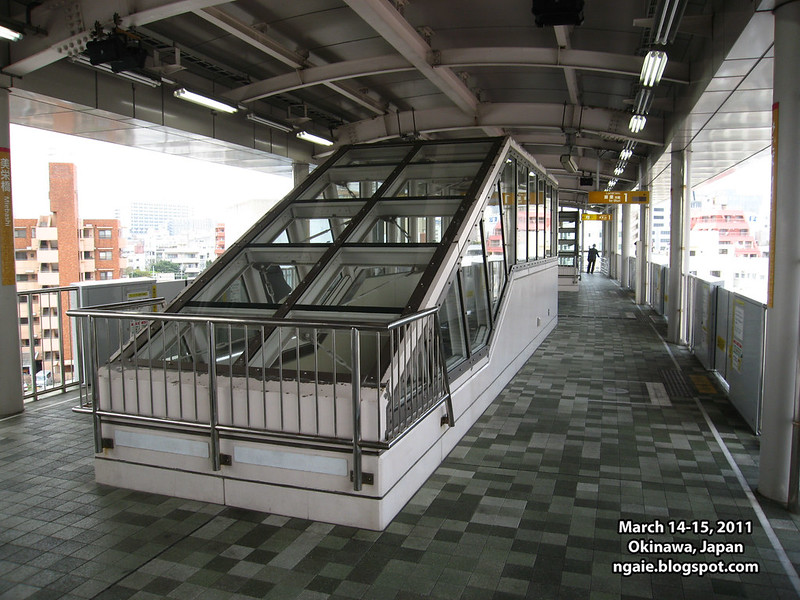
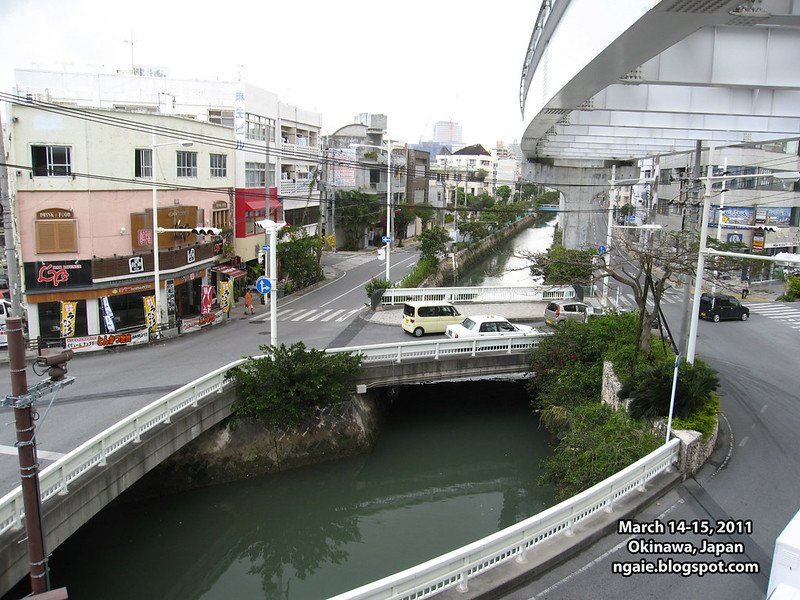

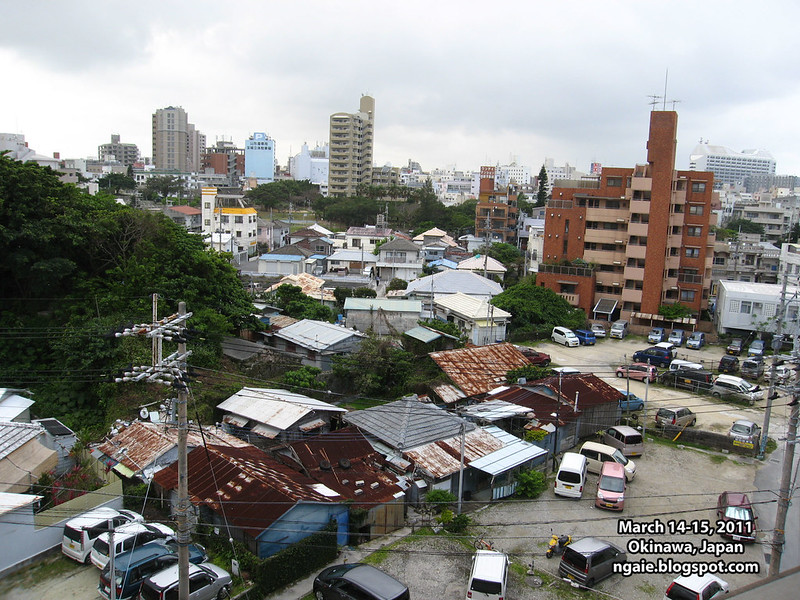
The Naha skyline.
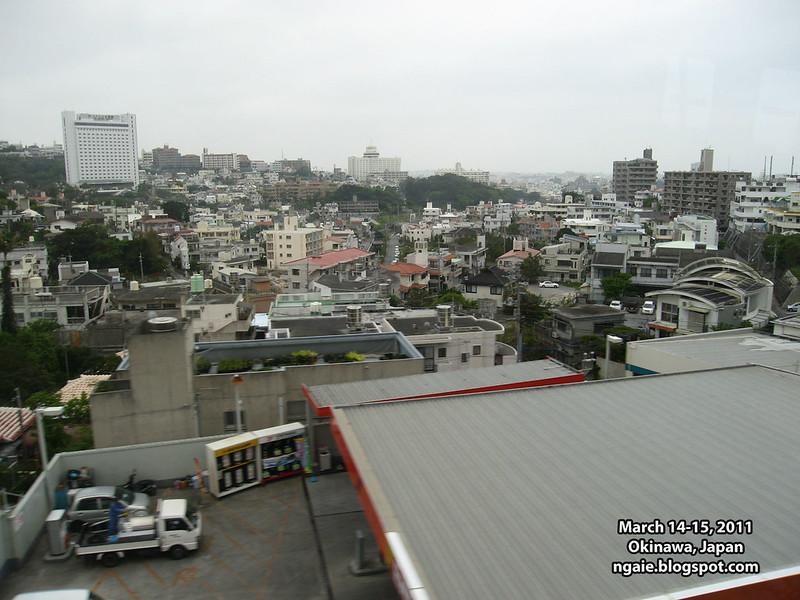
Daytime, at the Kokusai-dori street (国際通り), the main tourist trap in Okinawa, where you can buy all sorts of Okinawan "original goods" like Okinawa-made snacks, food souvenirs and regular souvenirs.
Also, steak restaurants where chefs do some sort of "performance" while cooking seem to be part of the tourist attraction for mainland Japanese tourists.
Because Okinawa was only handed over back to Japan in 1972 from the United States, it still has remnants of the American influence, like the popularity (and cheap price) of SPAM, canned soup and the ONLY A&W fast food outlets in Japan and the only place where you can buy root beer in Japan (most Japanese people hate the taste of this soft drink!).
The "Sams Maui Steak House" ad board in the middle of the picture seemed to be really popular on this street as they had multiple shops on the same street!

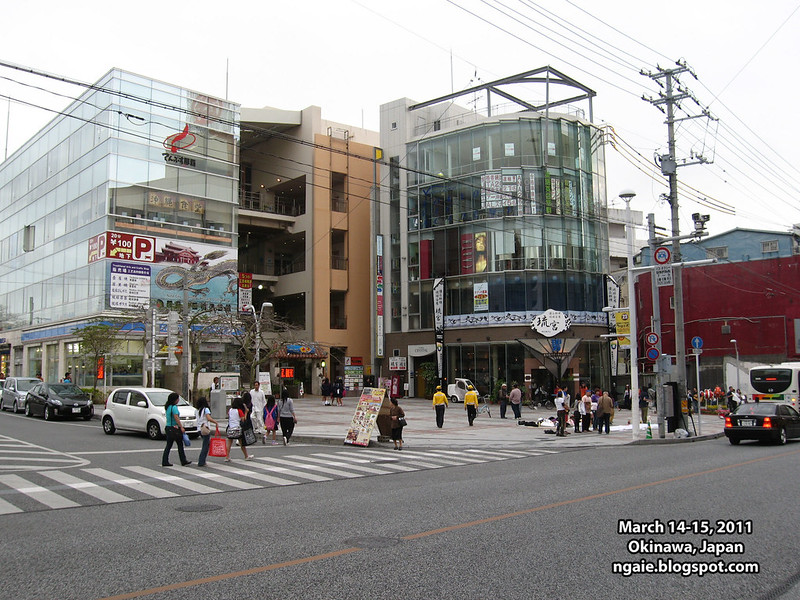
Street vendors. Now this is definitely something you *never* see in any city on mainland Japan.
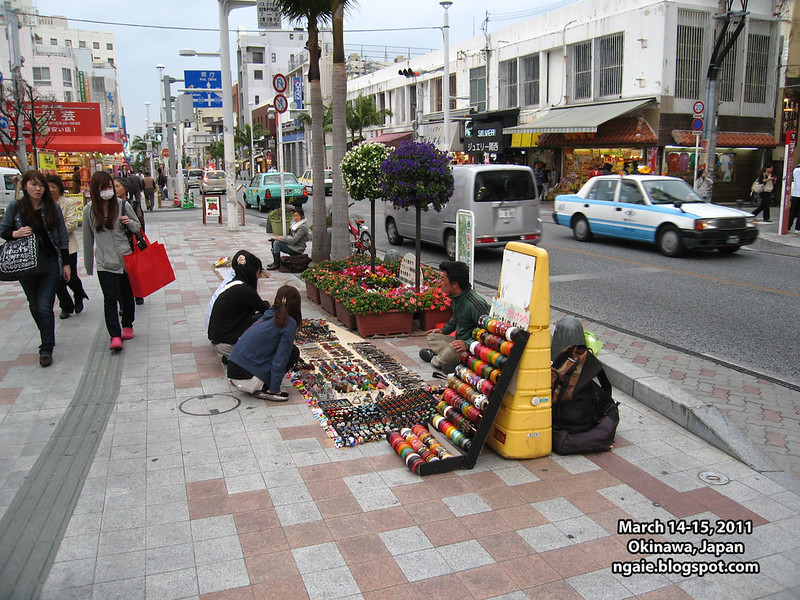
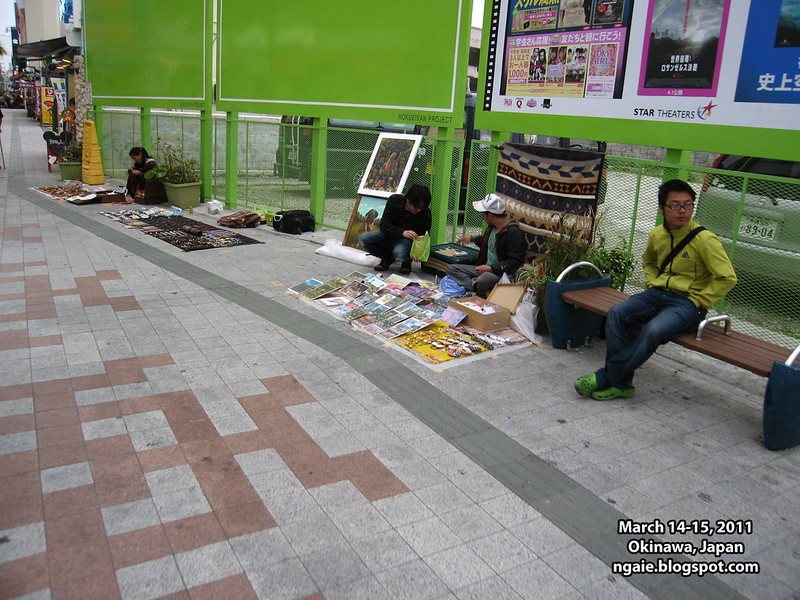
One of the main intersections of the area and the entrance to the public market.

Inside the public market.
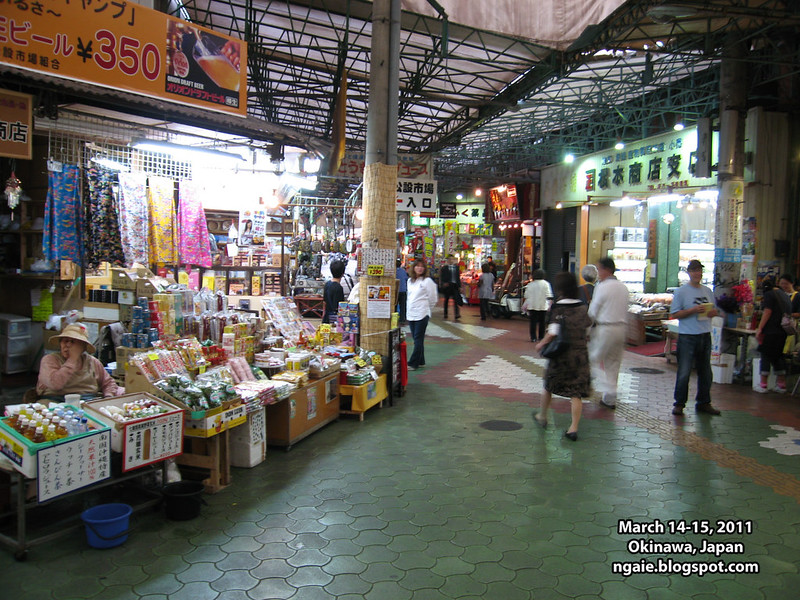

The shisa (シーサー) is one of the traditional decorations of Okinawa and you see them everywhere on gates, rooftops, etc. Apparently, they are popular as souvenirs. What better way to prove that you went to Okinawa when you give one of these things to your family, friends or your superiors at work?! Nothing like an expensive omiyage to curry favour with buchō-sama.
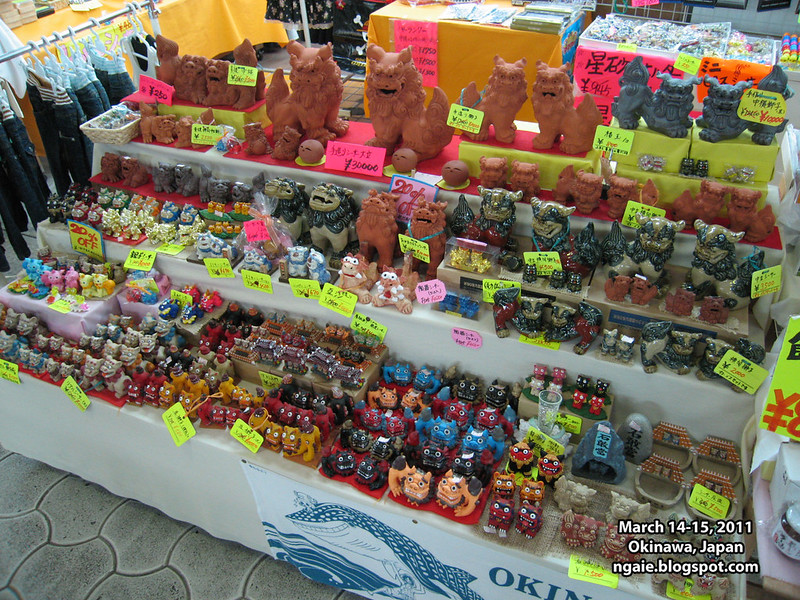
Canned soup on sale. Now this is something you never see on mainland Japan. When I saw this, I was wondering where they sourced this from? Did someone have access to a supermarket on an American military base? (Okinawa hosts 90% of the U.S. military bases in Japan)
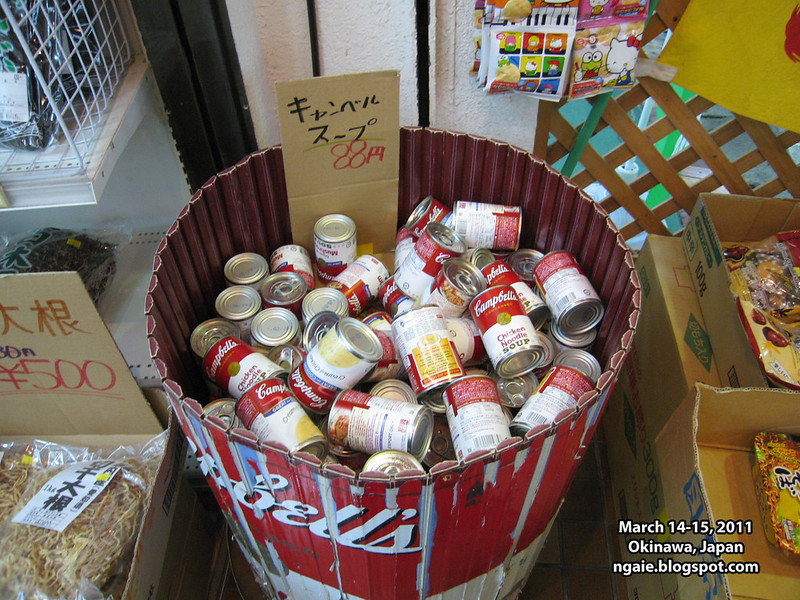
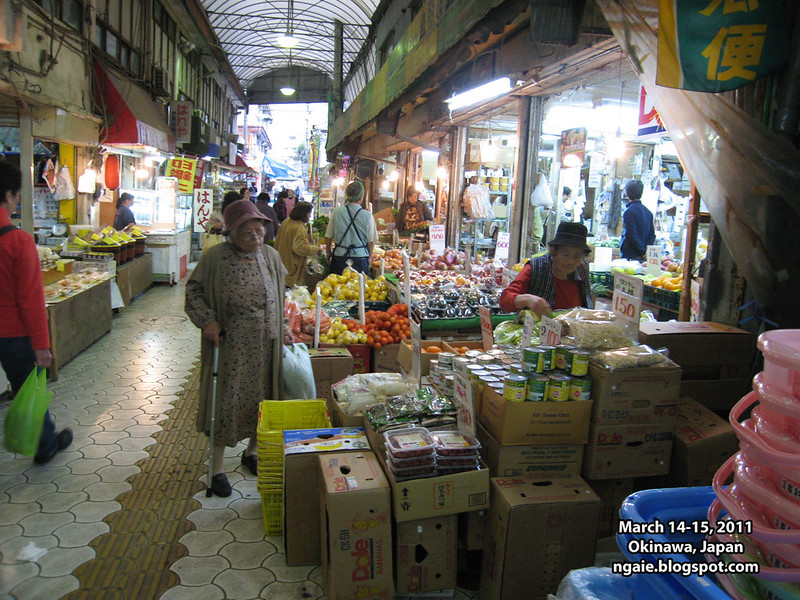
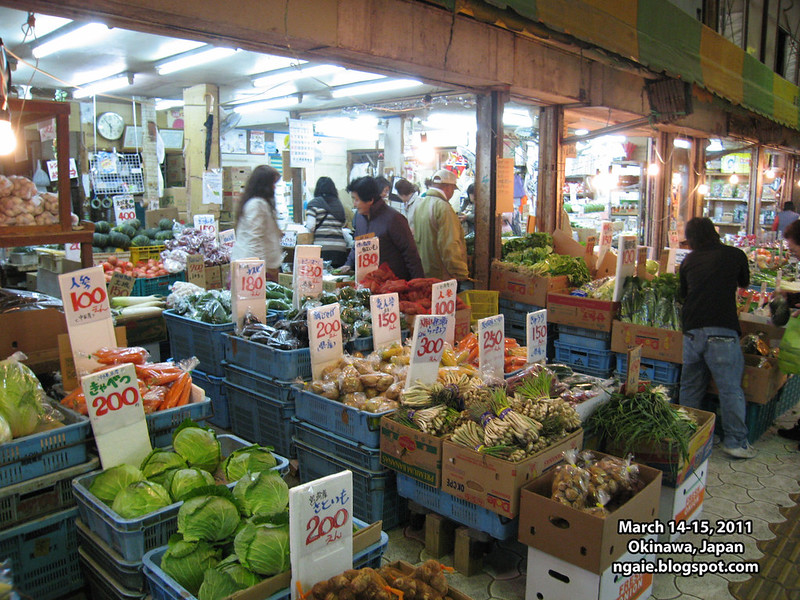
Feels like a place that time has forgotten.
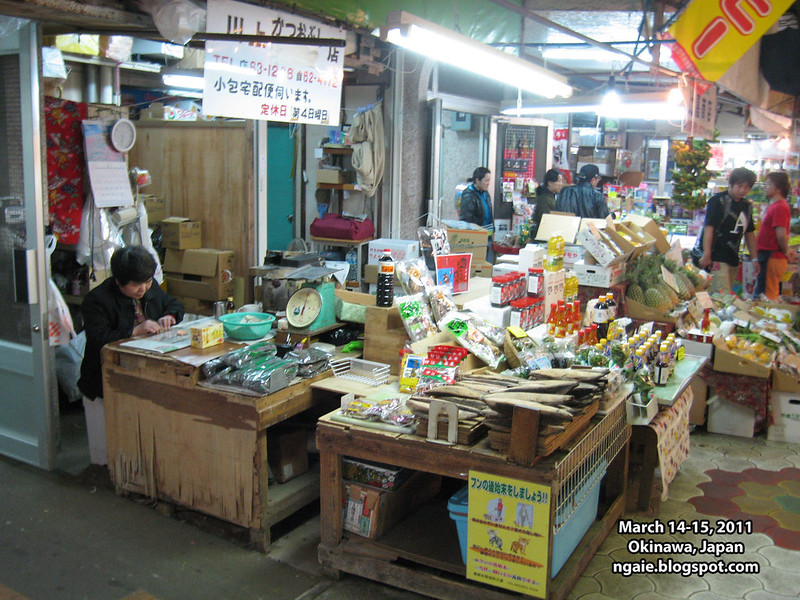
A traditional Okinawan snack, the sata andagi (サーターアンダーギー). They are sweet deep fried dough similar to doughnuts.
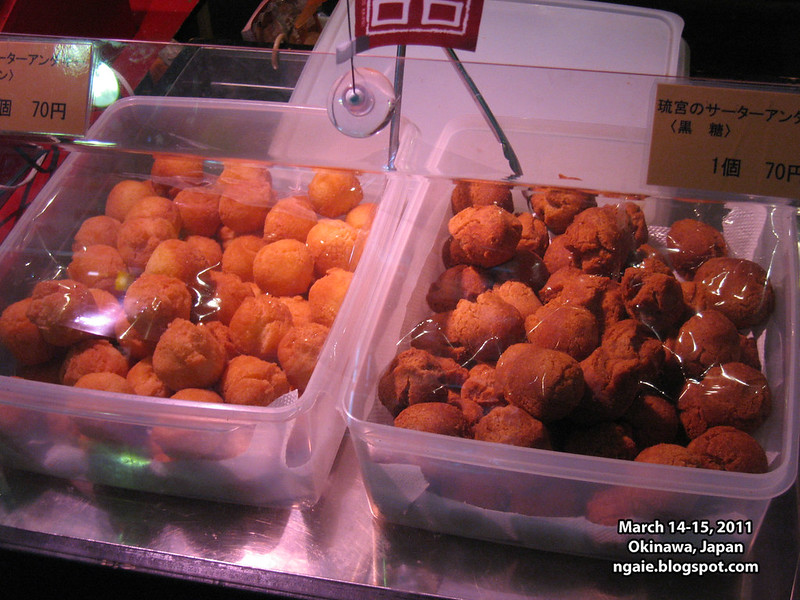
The end of the market.
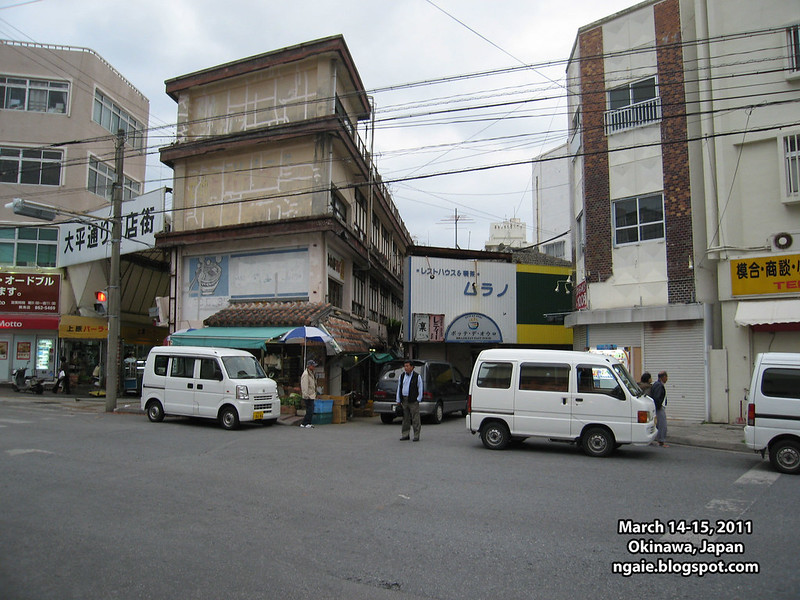
Kokusai-dori at night. One of the shops that sells some sort of liquid with a snake inside.
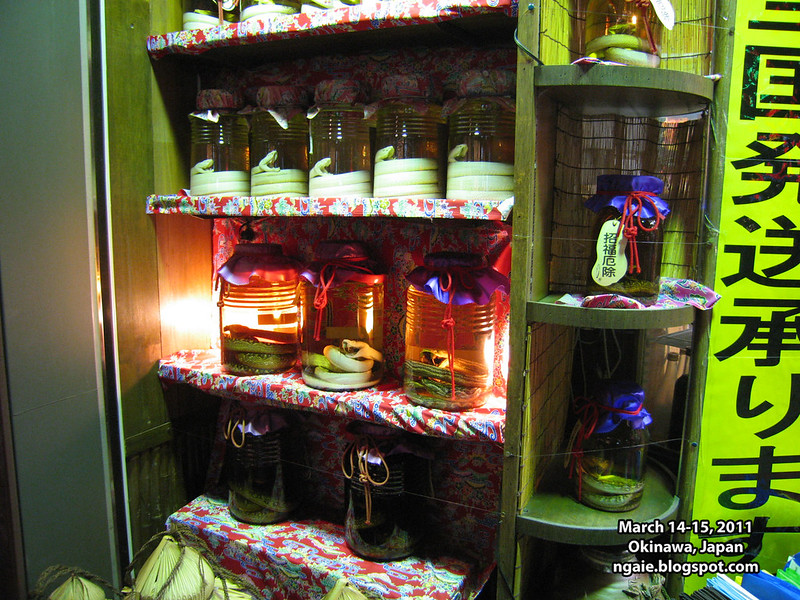
My mother beside a shisa of Kokusai-dori.
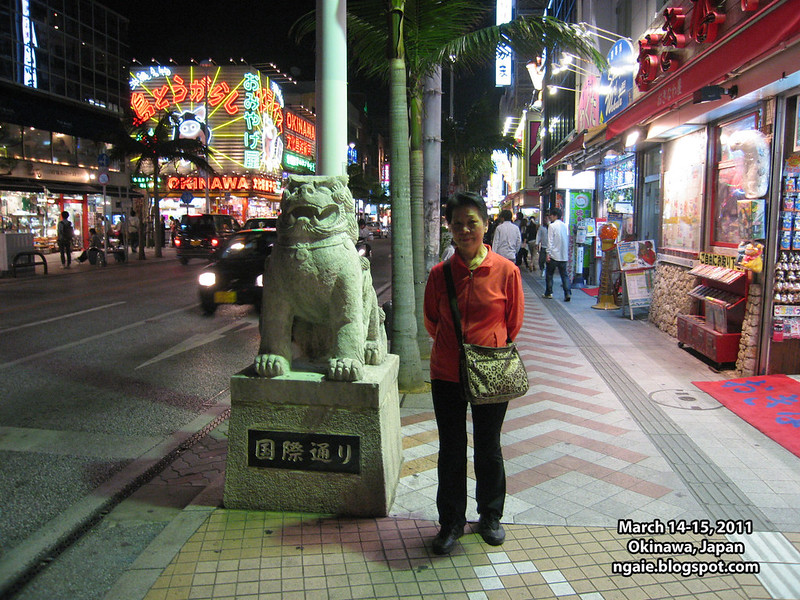
The lights of Kokusai-dori at night.

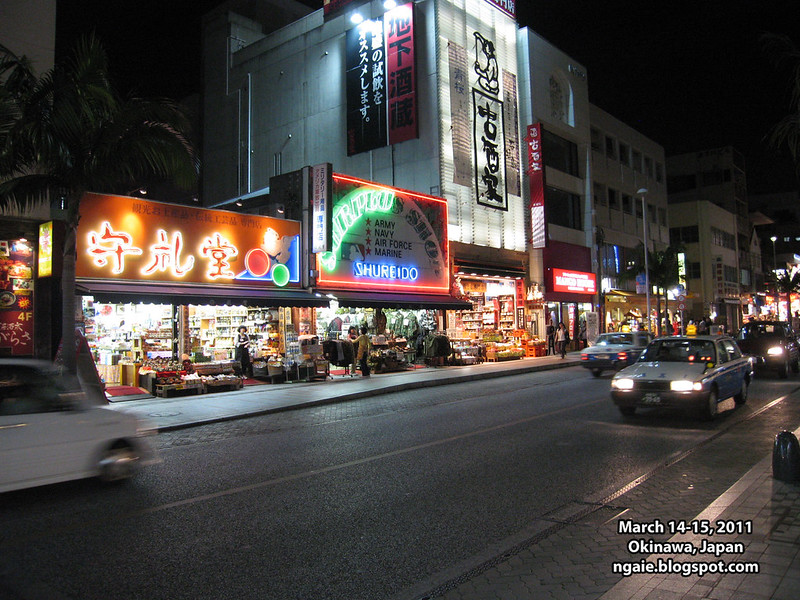
The next day, we went to visit Shuri Castle. The castle was the home of the King of the Ryūkyū Kingdom before its annexation into Japan as Okinawa. The castle is a reconstruction of the original building that was almost completely destroyed after World War II in 1945.
Shuri Castle from the monorail.

Arriving in the area near the castle.
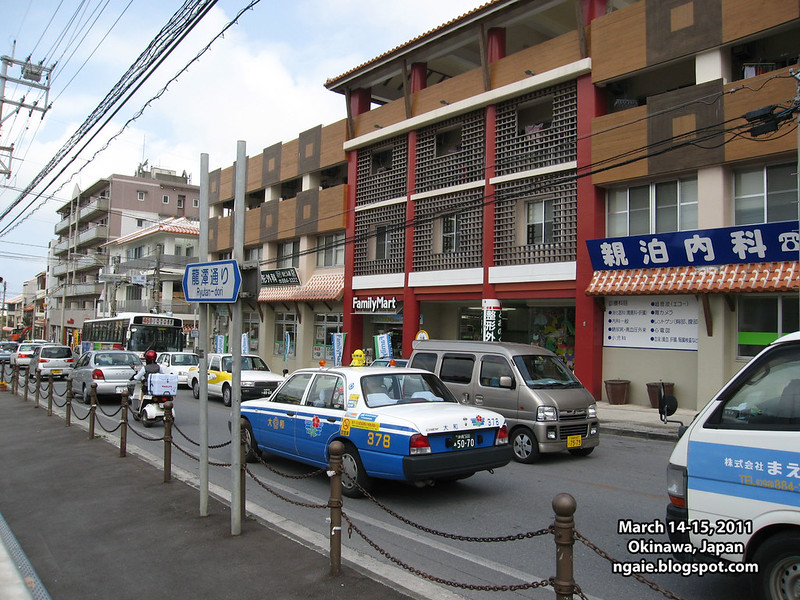
The tropical climate of Okinawa really wears down many buildings and structures so the exterior of many buildings look like this. This is a university, near the castle.
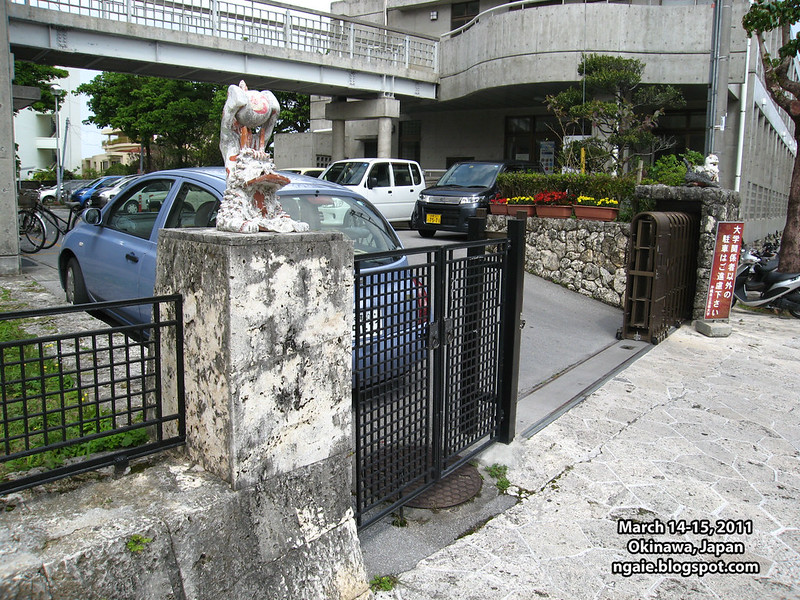
Traditional Okinawan buildings.
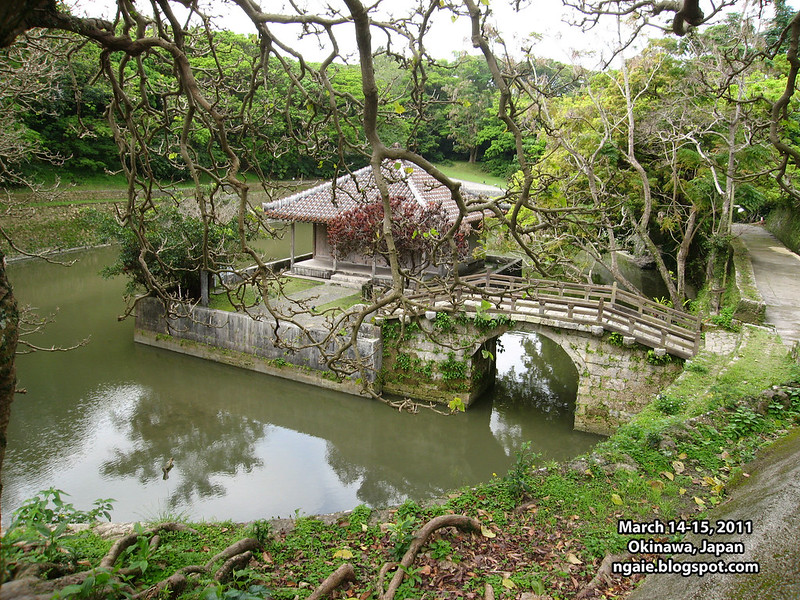
Apparently, this is a World Heritage site.
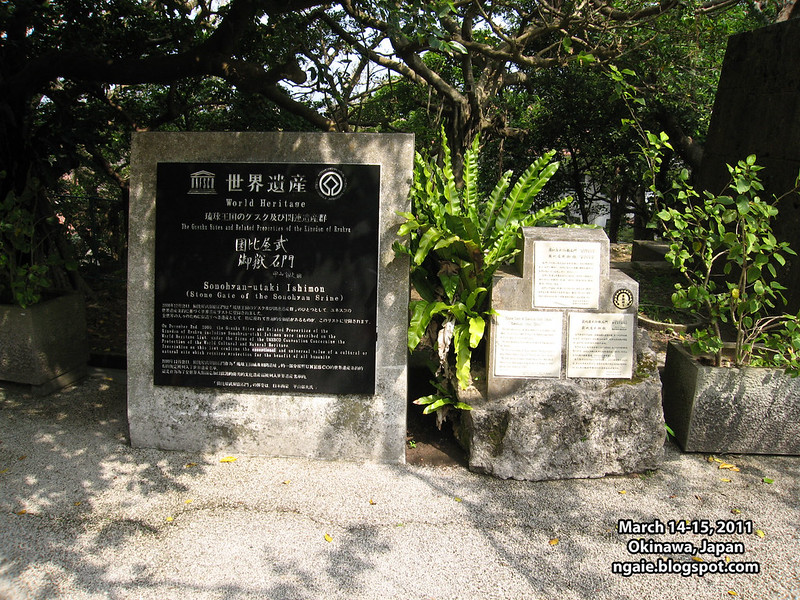
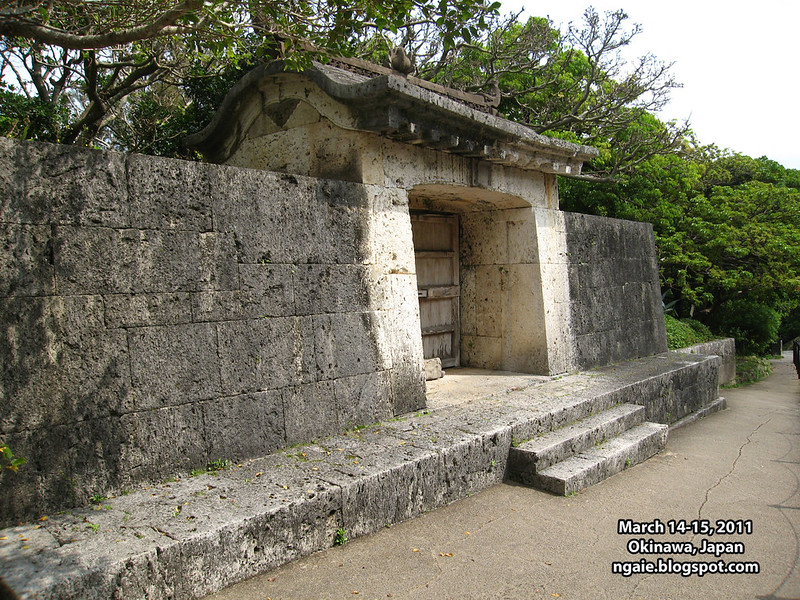
The Shureimon. The Chinese-style gate near the castle.
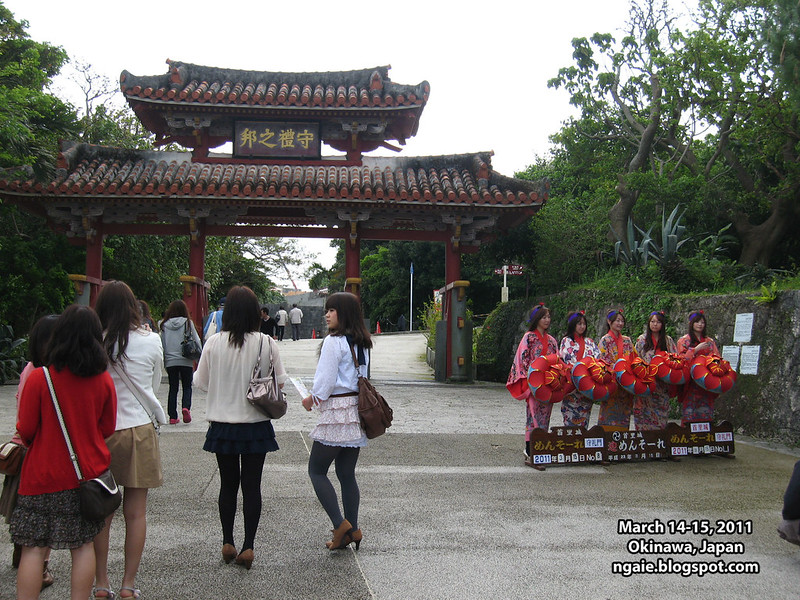
The walls of Shuri Castle.
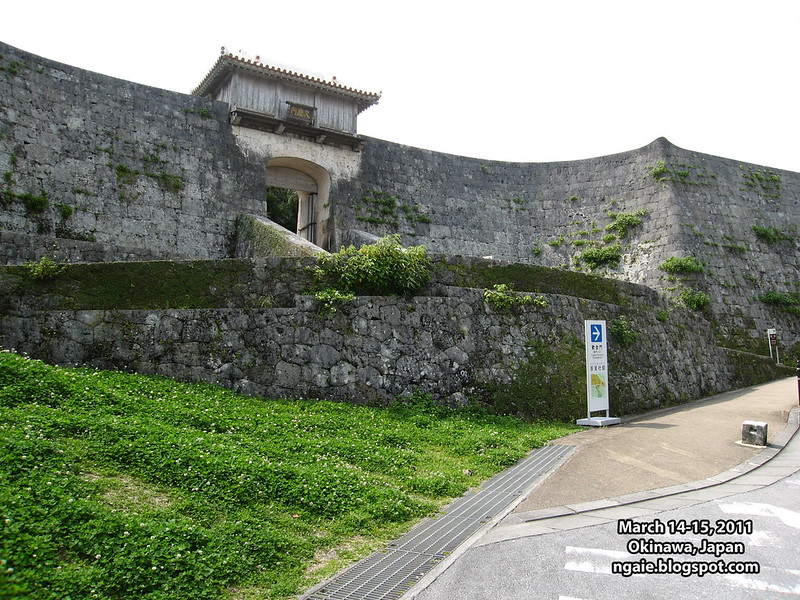
Entering Shuri Castle.
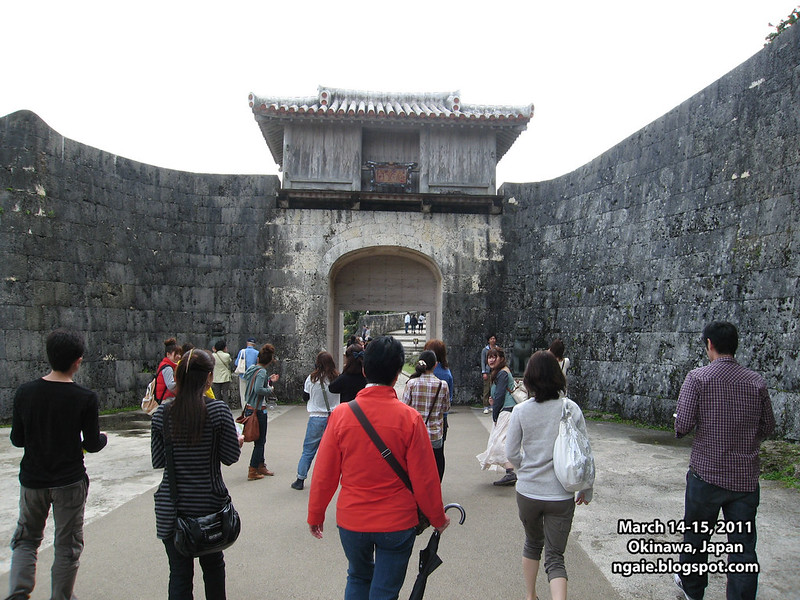
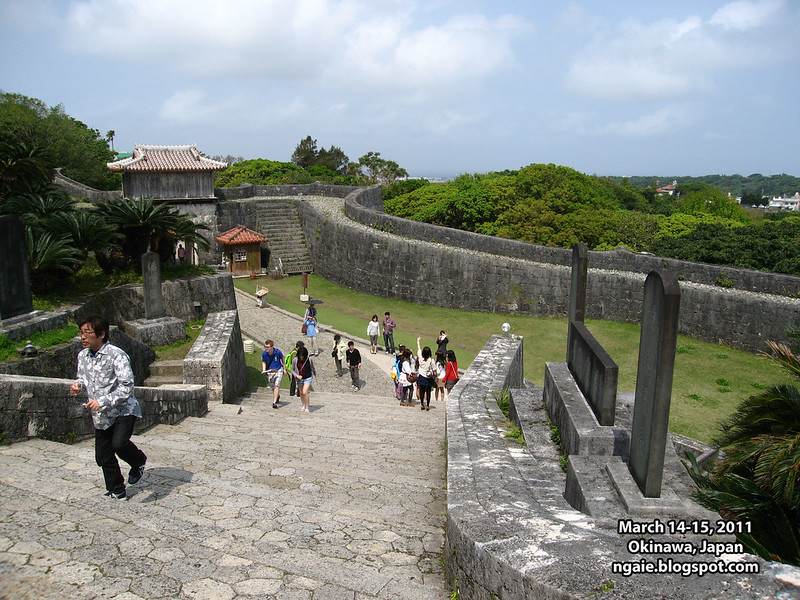
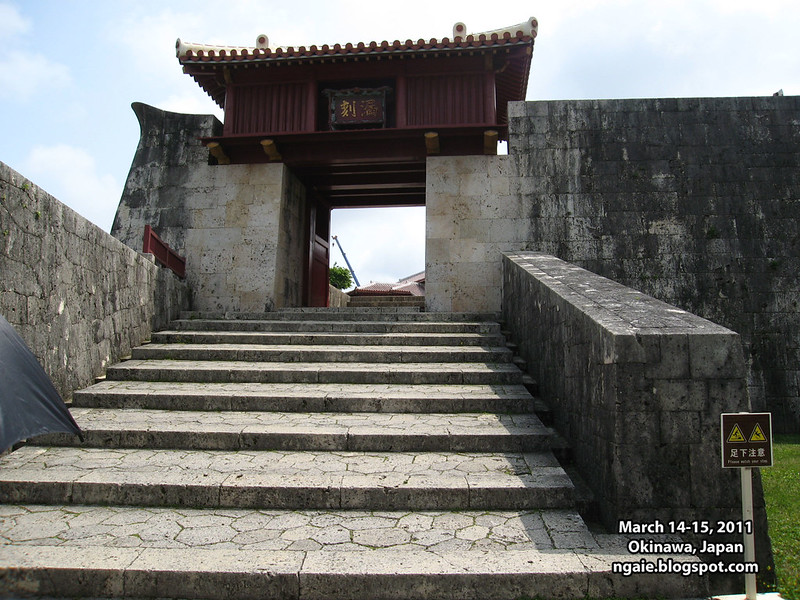
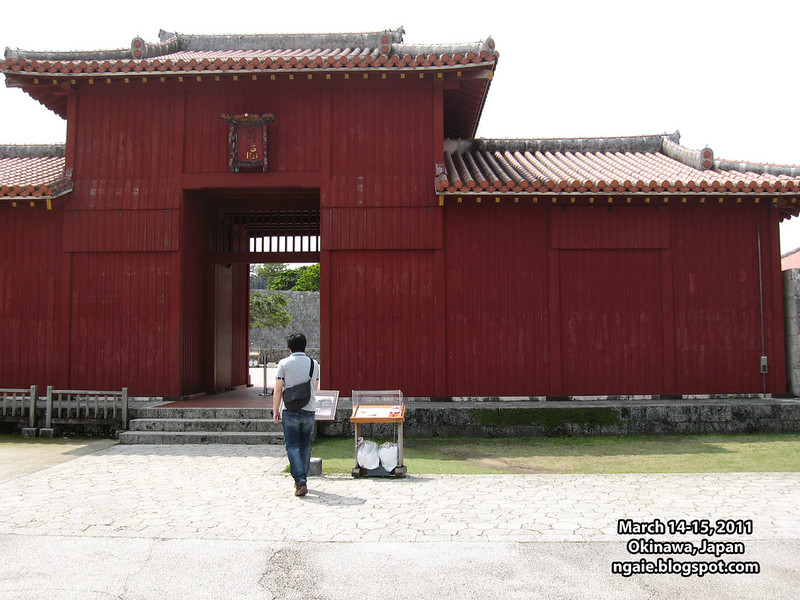
A picture of me and my mother in front of the reconstructed main hall.
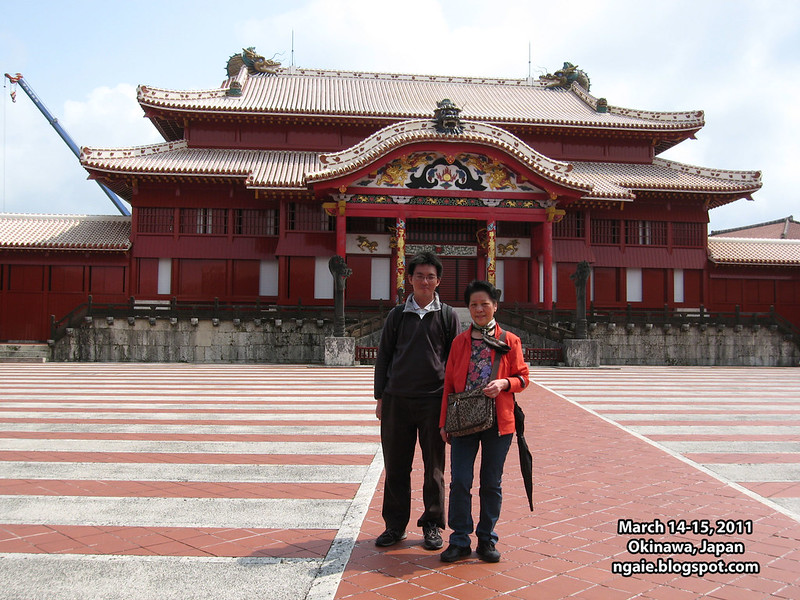
Inside the meticulously reconstructed throne room. You can see the Chinese influences on the Ryūkyū Kingdom.

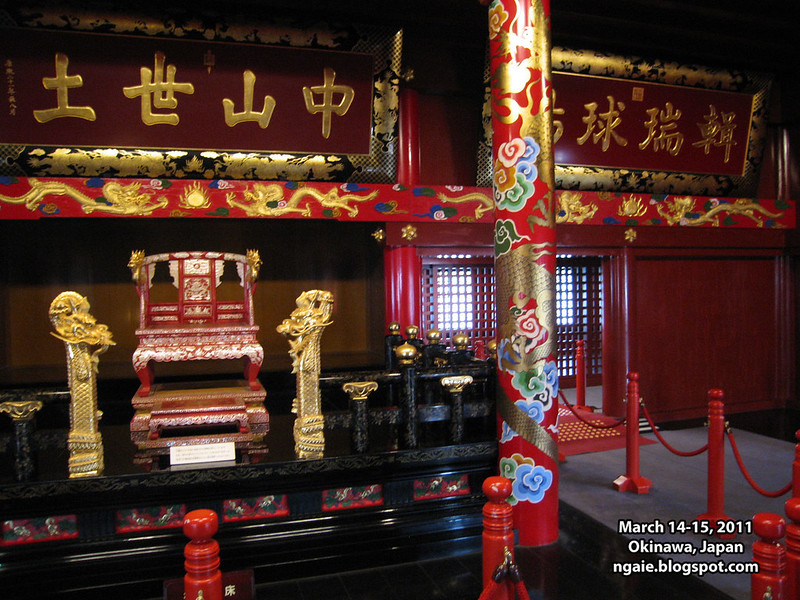
The seat where the King would sit to look out the square in front of the castle.
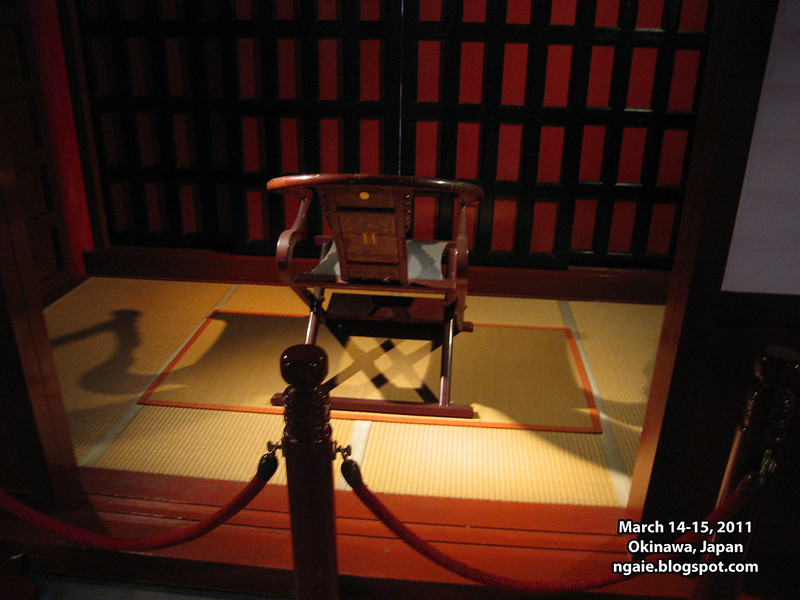
Diorama of the ceremonies the King held in the past. Very Chinese-like.
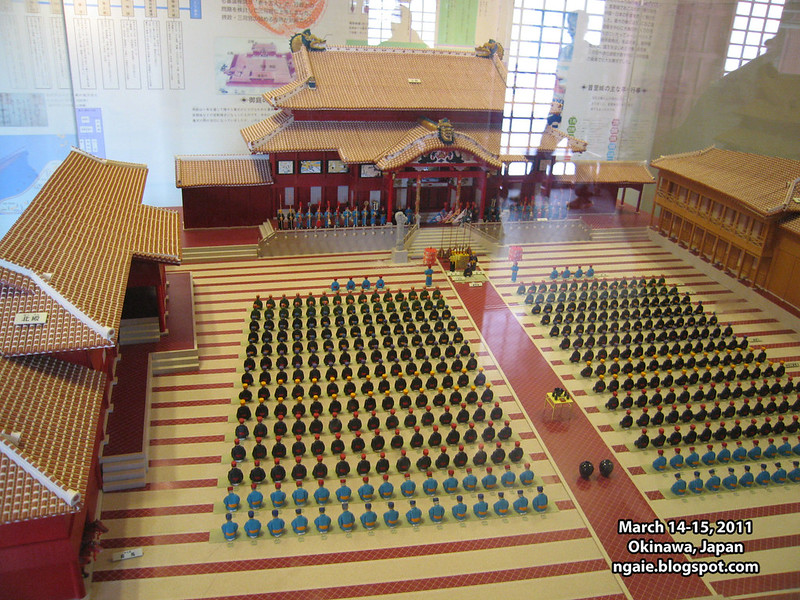
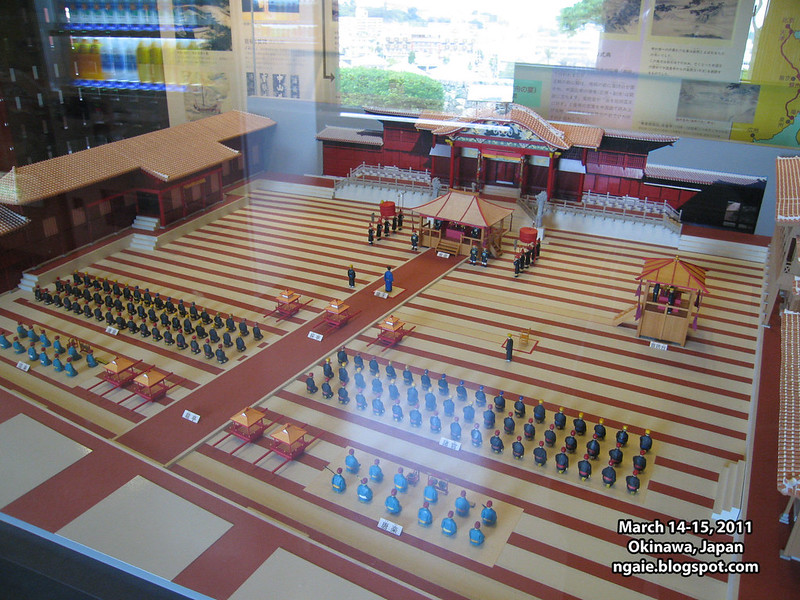
The last attraction that we went to for the day was the Okinawa Prefectural Museum. Here is a traditional Okinawan house/building.
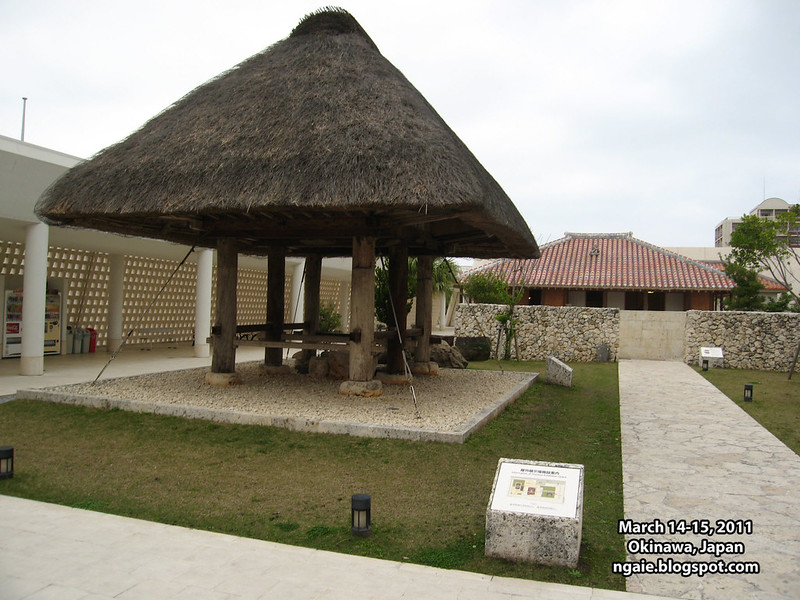
Admission tickets of the attractions we visited on our trip.
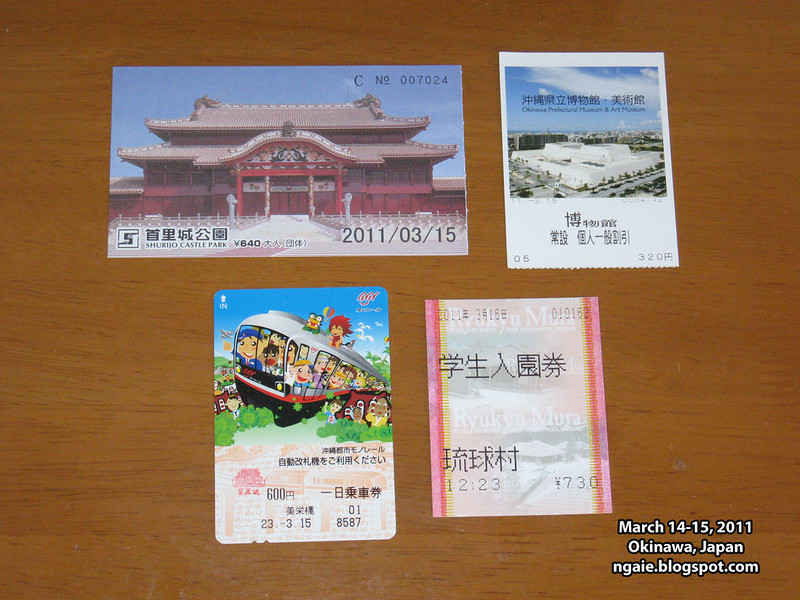

0 comments:
Post a Comment